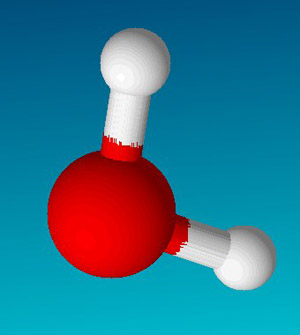Water is an odd material. It can dissolve many different types of compounds far beyond the range of other molecular solvent. It expands when it freezes, retains much more heat than one might expect, has a much higher surface tension than it should, and exists in all three states, solid, liquid, and gas in natural conditions on Earth. Water one might say is thermodynamic anomalous. Now, Austen Angell of Arizona State University has found an important clue as to what happens when water makes the transition from the crystalline ice phase to a disordered solid, glassy state.
The glassy state of water is nothing more than a disordered variant on the ice theme. Whereas ice is crystalline, glassy water has an apparently disordered, amorphous structure. The transition to this glassy state has baffled scientists for many years. Angell and colleagues, however, have now exposed a clue that might explain water’s bizarre behaviour.

Austen Angell
We know a lot about glasses that form from ordinary silicates, sugars and metals, Angell explains, They’re making golf clubs out of glassy metals these days. But how important is the glassy state of water? And what can it tell us about ordinary water, which is anything but ordinary?
Because of the inherent disorder of a glassy solid, it has a higher heat capacity, which means it takes more energy to raise its temperature. Temperature is nothing more than the rate of vibration of the molecules in a material. Energy can bounce more easily back and forth between a crystalline solid so it has a lower heat capacity, but there are no easy routes along which energy might travel in a glass so energy is lost and more is needed to heat the material to the same temperature.

Water, superficially a simple molecule
However, at a certain transition point, the glass temperature, glassy materials suddenly leap to a new higher heat capacity zone and slide from the solid state into a very viscous liquid phase. It’s as if a solid brick of cold honey were heated and suddenly became a sticky liquid again. Inevitably, pure water does not behave like this.
Heat cold glassy water and its heat capacity remains fairly constant until the temperature reaches about 136 Kelvin. It then increases only slightly. However, at 150 K, water crystallizes into a more icy form, taking on order that was not present in the glassy state. Conversely, supercooling water produces a similarly odd effect. The heat capacity remains constant down to 250 K but then increases very rapidly the colder it gets. Angell hoped to discover what happens in the no-go zone between 150 and 250 K and to find the real glass transition of water.
He and his colleagues solved the problem by looking at the behaviour of both supercooled water and nanoconfined glassy ice. Water’s heat capacity suddenly goes crazy near this transition and, before we can see what is happening, it crystallizes, Angell says. “One trick for finding out what is going on in there is to put the water in a confinement – to make it nanoscopic so that it forgets how to crystallize. We see the same behaviour but with no data gap.”
Angell explains this anomalous behaviour as being due to the unusual hydrogen bonds that form between neighbouring water molecules to form a network. This hydrogen bond network underlies almost all of the anomalous properties of water. The network allows water to make an order-disorder transition which essentially sucks out all of the heat capacity at temperatures around 220 K and explains why the glass transition in water (near 136 K) is so undramatic compared to other substances, explains Angell.
There may be no direct applications of this discovery, but it does fill in the gaps in our knowledge of water’s behaviour and may lead to a clearer understanding of water’s properties at the very low temperatures of the upper atmosphere (200 K) with putative climate effects or on other bodies in the solar system, including planets, moons, and comets where some researchers are hoping to find water that might support life.
Further reading
Science, 2008, 319, 582-587
http://dx.doi.org/10.1126/science.1131939
C. Austen Angell’s homepage
http://www.public.asu.edu/~caangell/